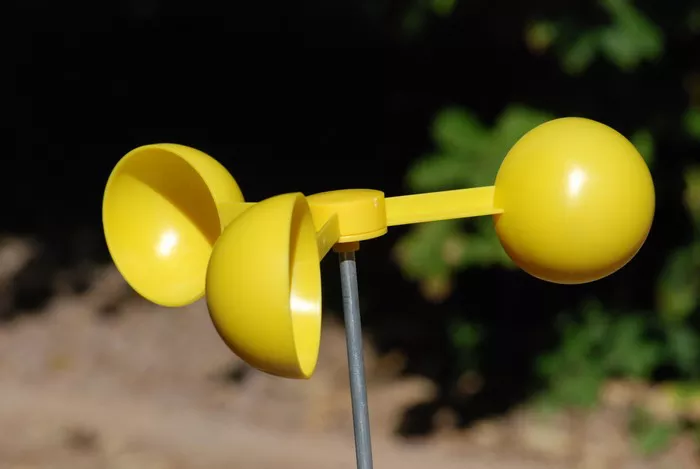Anemometers are crucial instruments used for measuring wind speed and airflow in various applications, including meteorology, industrial processes, and environmental monitoring. One particular type, the Constant Current Anemometer (CCA), is widely used in fluid mechanics and thermal flow measurements due to its high sensitivity and accuracy. This article delves into the working principles, components, applications, advantages, and limitations of constant current anemometers, making the topic accessible to engineers, researchers, and enthusiasts.
Working Principle of a Constant Current Anemometer
A constant current anemometer operates based on the principle of thermal heat transfer. It utilizes a heated sensor element, typically a thin wire or a small film, that is exposed to airflow. The system maintains a constant electrical current passing through the sensor, thereby heating it. As air flows over the heated sensor, it removes heat via convection, leading to a temperature change in the sensor.
Since the current remains constant, the change in resistance of the sensor (due to temperature variation) is measured to determine the flow velocity. This is based on King’s Law, which states that the heat dissipation from the wire is proportional to the velocity of the surrounding fluid.
Mathematically, this relationship is expressed as:
q=A + BU^n
where:
- q is the heat dissipation rate,
- A and B are empirical constants,
- U is the flow velocity, and
- n is an exponent typically between 0.4 and 0.5.
By analyzing the resistance change, which corresponds to temperature variations, the flow velocity can be accurately determined.
Components of a Constant Current Anemometer
A constant current anemometer consists of several essential components:
Heated Sensor Element: Typically a fine tungsten or platinum wire or a thin film, which acts as the heat source.
Constant Current Source: Ensures a steady electrical current supply to the heated sensor.
Wheatstone Bridge Circuit: Used to measure changes in resistance of the sensor.
Amplifier and Signal Processor: Converts the resistance changes into a readable voltage signal.
Calibration System: Ensures accurate conversion of electrical signals into flow velocity readings.
Applications of Constant Current Anemometers
Constant current anemometers have a wide range of applications in various fields:
1. Fluid Mechanics Research
CCA is used extensively in aerodynamics and fluid mechanics studies to analyze turbulent airflows and measure velocity fluctuations in wind tunnels and experimental setups.
2. Industrial Process Monitoring
Industries that rely on airflow control, such as HVAC (Heating, Ventilation, and Air Conditioning) systems, utilize CCAs to monitor and optimize airflow efficiency.
3. Environmental and Meteorological Studies
These anemometers are used to measure wind speed and air movement in atmospheric studies, aiding weather forecasting and climate research.
4. Aerospace Engineering
CCA plays a vital role in wind tunnel testing, helping engineers design and test aerodynamic structures such as aircraft and spacecraft components.
5. Medical Applications
In respiratory studies, CCAs are used to measure airflow rates in ventilators and pulmonary diagnostic equipment.
Advantages of Constant Current Anemometers
1. High Sensitivity
Due to their ability to detect minute resistance changes, CCAs can measure very low airflow velocities with high precision.
2. Fast Response Time
CCAs have a rapid response time, making them suitable for real-time flow measurements, especially in dynamic environments.
3. Minimal Flow Disturbance
The fine-wire sensor design causes minimal obstruction to the airflow, ensuring accurate readings.
4. Wide Measurement Range
CCAs can measure a broad spectrum of flow velocities, from very low to high-speed turbulent flows.
5. Stable Output
Since the current is kept constant, the output signal is relatively stable and less affected by external electrical fluctuations.
Limitations of Constant Current Anemometers
1. Temperature Sensitivity
External temperature variations can affect the accuracy of measurements, necessitating proper calibration.
2. Fragility of Sensor Elements
The thin wire or film used in CCAs is delicate and can be damaged easily, requiring careful handling and maintenance.
3. Power Consumption
Since a continuous current is required, power consumption is higher than some other anemometer types.
4. Complex Calibration
Regular calibration is necessary to maintain accuracy, especially in varying environmental conditions.
Conclusion
Constant Current Anemometers are highly precise instruments used to measure airflow and wind velocity based on heat transfer principles. Their ability to provide fast, accurate, and sensitive readings makes them invaluable in scientific research, industrial applications, and meteorological studies. However, they require careful handling, calibration, and maintenance to ensure optimal performance. Understanding their working principles and applications helps engineers and researchers leverage their advantages for various airflow measurement needs.
By utilizing CCAs effectively, industries and researchers can optimize fluid dynamics processes, improve environmental monitoring, and enhance the accuracy of aerodynamic studies.

